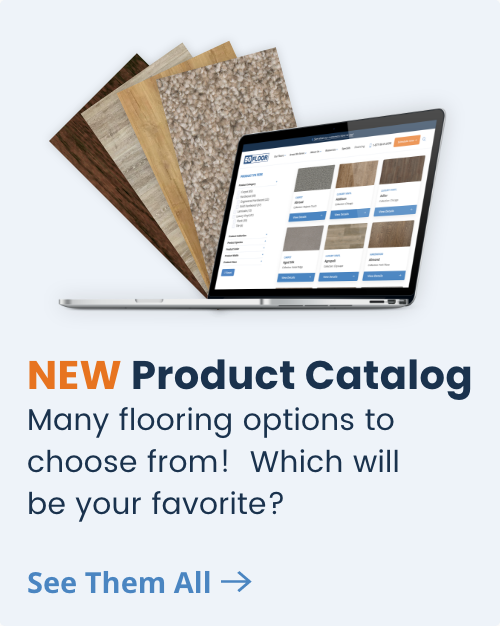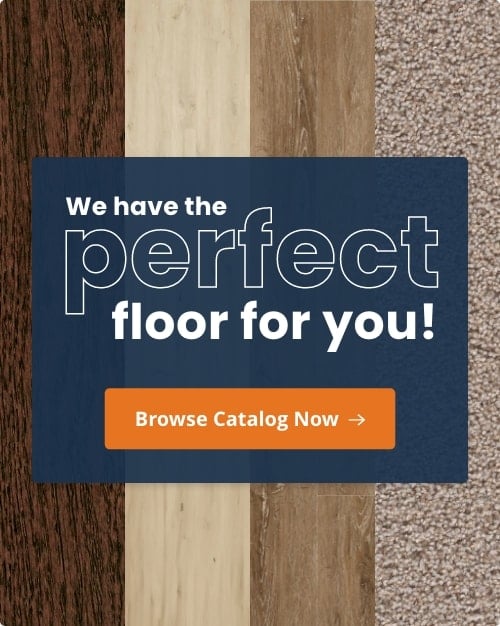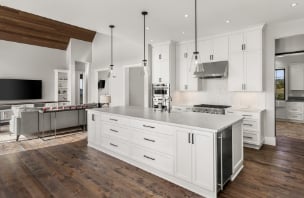You may not realize it, but the flooring material you choose could be the most important design decision you make in your home. Think about it — not only does it bring color and character to a space, but you walk, stand and sit on it, too. Therefore, you want to choose something that suits your style but is comfortable for you and your family. On top of that, you want to get your money’s worth — an over-the-top expensive flooring material or one that’s not durable won’t do.
As such, it can be tough to settle on the right material for your flooring project. Whether you’re replacing all the floors in your home or simply sprucing up one area, weigh the pros and cons of each option to decide which one works for your abode. To make that task easier, here’s what to consider when it comes to hardwood, tile, laminate, vinyl and more.


This work is licensed under a Creative Commons Attribution-NoDerivs 3.0 United States License.
Solid Hardwood
Real hardwood floors have remained eternally popular, and for good reason — they last for a long time. The all-natural planks add a lot of character to a space, too. When they start to show wear and tear, have them sanded down and refinished for a fresh new look. Hardwood suits a slew of design styles, too. It can look just as rustic as it can sleek and modern.
Of course, hardwood does have its downsides. You probably won’t want to choose this material if you’re on a tight budget, because it’s expensive and time-consuming to install. Plus, hardwood doesn’t retain heat, so if your house could use some warmth, try another material.
Engineered Hardwood
Like its all-natural predecessor, engineered hardwood looks great and is easy to clean. It has a pro that solid wood can’t offer, though — the engineered version tends to be much more durable. Still, its cons mostly align with the traditional planks, since this type of flooring takes long to install and can’t retain heat. Another negative of engineered hardwoods is you can’t sand them down when you want a new stain or finish on your floors.
Laminate
Laminate won’t break the bank, and it’s easy and quick to install. Nowadays, you can find vinyl designs that look an awful lot like some of the more expensive flooring options on this list, too. The bad news is, laminate damages easy, and you can’t sand it down to fix it. You will have to replace the damaged section. Plus, when it comes to home resale value, sellers derive little to no benefit from a new laminate floor.
Carpet
Nothing’s cozier than carpet. You don’t have to worry about your feet feeling cold as you walk around a carpeted house. Plus, the plush flooring can work as a sound barrier and insulation. You’ll find there’s an endless selection of colors and styles of carpet, should you go down this route.
Unfortunately, carpets can show wear and tear more quickly than other types of flooring, especially in high-traffic areas. The materials that withstand this type of trampling and staining cost more, too. Of course, if you really want carpet, you can take steps to maintain your floors for longer. Bringing in a professional to deep clean it every once in a while can keep it looking its best.
Vinyl
When it comes to ease of use, there’s no floor quite like vinyl. It’s simple to install a vinyl floor and, once it’s in, you’ll find you can clean it with ease. Water can’t slip through, making this a great option for bathrooms, laundry rooms and mudrooms. On the other hand, the shape of your vinyl floors might morph with temperature changes. If you drop something sharp, it will sustain damage.
Tile
Tile’s a solid choice — pun intended — for both indoor and outdoor spaces. It’s durable and stain-resistant, and it’s simple to clean up. Plus, if you happen to nick your tile floors, it’ll be hard to notice. This material hides imperfections with ease. If you’re relatively handy, you can install a tile floor yourself.
Of course, tile won’t suit every space. You probably wouldn’t install it in a room meant to be cozy, such as a living room or bedroom. It’s not comfortable to sit on, nor is it warm on your feet. Tile is also very strong, so if you drop something, it is likely to break.
Envision Your Ideal Floor
With so many choices, it can be tough to decide which material to go with. However, you probably know what you want and need from your floor. Whether it’s coziness, durability or ease of installation, there’s a floor to match your vision. Chances are, you’ve found the right one from the above list.





